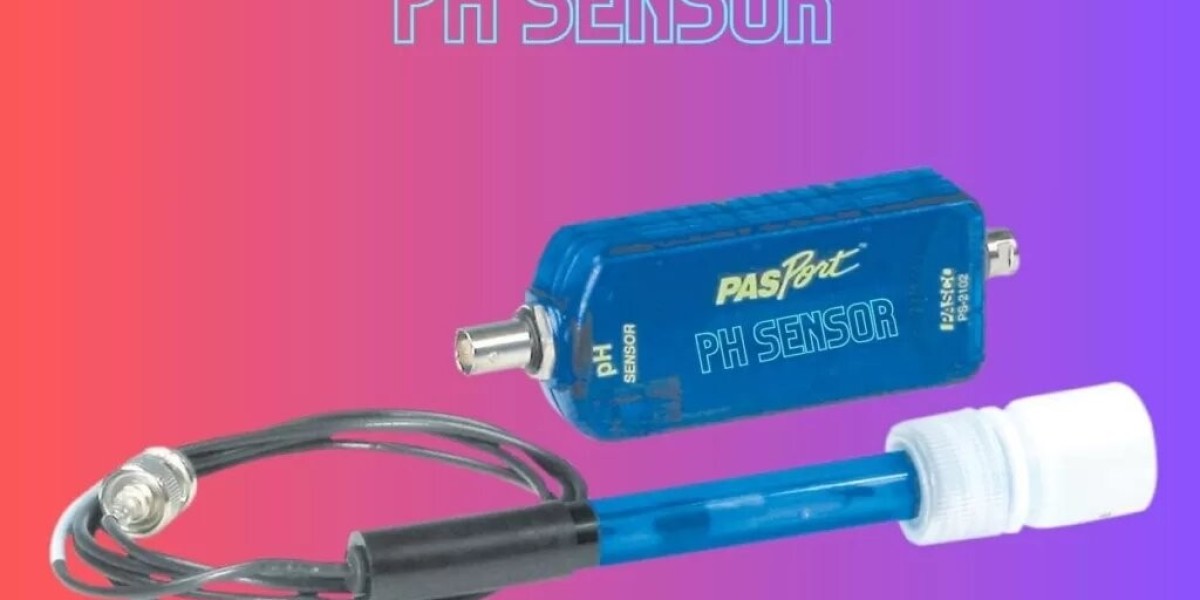In this blog post, we will explore what pH sensors are, how they work, their various applications, and tips for choosing the right one for your needs.
What is a pH Sensor?
A pH sensor is an instrument that measures the acidity or alkalinity of a solution, providing a pH value on a scale of 0 to 14. A pH of 7 is considered neutral, while values below 7 indicate acidity and those above indicate alkalinity. The ability to measure pH accurately is vital in various fields, including environmental monitoring, pharmaceuticals, food and beverage production, and more.
How Do pH Sensors Work?
The basic principle behind a pH sensor involves an electrode that generates a voltage in response to the concentration of hydrogen ions (H⁺) in a solution. This voltage is then converted into a pH value through a calibration process. Most pH sensors consist of two main components: the sensing electrode and the reference electrode.
Sensing Electrode: This is usually a glass electrode sensitive to H⁺ ions. When immersed in a solution, the electrode's surface interacts with the hydrogen ions, generating a measurable potential.
Reference Electrode: This electrode maintains a stable voltage irrespective of the solution being tested. It is essential to provide a baseline against which the potential of the sensing electrode can be measured.
Types of pH Sensors
pH sensors come in various types, each suited for different applications:
Glass pH Sensors: These are the most common and are ideal for general laboratory use. They provide fast and accurate readings in a wide range of conditions.
ISFET pH Sensors: Ion-sensitive field-effect transistors (ISFET) are more robust and can be used in harsh environments. They are often found in industrial applications due to their resistance to fouling and aggressive chemicals.
Combination pH Sensors: These integrate both the sensing and reference electrodes in one unit, simplifying the design and making them easy to use.
Portable pH Meters: These handheld devices are perfect for field measurements and are designed for convenience and ease of use.
Applications of pH Sensors
The applications of pH sensors are vast and varied:
Agriculture: Farmers use pH sensors to monitor soil conditions, ensuring optimal nutrient availability for crops. By maintaining the right pH level, they can enhance plant growth and yield.
Water Quality Monitoring: pH sensors play a crucial role in environmental monitoring, helping to assess the health of water bodies. They ensure that aquatic life is sustained by monitoring and maintaining the pH levels within a safe range.
Food and Beverage Industry: pH levels significantly impact the quality and safety of food products. pH sensors help ensure that products are within regulatory standards and maintain flavor profiles.
Pharmaceuticals: Accurate pH measurement is critical in drug formulation, as it can affect the efficacy and stability of the medication.
Choosing the Right pH Sensor
When selecting a pH sensor, consider the following factors:
Application: Identify the specific requirements of your application. Different environments may require specialized sensors, such as those that resist fouling or can withstand extreme temperatures.
Calibration: Ensure that the sensor can be easily calibrated for accurate readings. Regular calibration is essential for maintaining accuracy.
Maintenance: Look for sensors that are easy to maintain and service. Regular maintenance can extend the lifespan of the sensor and improve performance.
Cost: Balance the cost of the sensor with its performance and reliability. Sometimes, investing in a higher-quality sensor can save money in the long run due to reduced maintenance and replacement costs.
Conclusion
pH sensors are vital instruments that provide critical information across various sectors. Their ability to measure acidity and alkalinity accurately makes them indispensable for ensuring quality, safety, and efficiency in processes ranging from agriculture to pharmaceuticals. Understanding the different types of pH sensors and their applications can help users select the right tools for their needs, paving the way for successful and precise measurements. Whether you’re monitoring soil health or ensuring safe drinking water, the right pH sensor can make all the difference in achieving optimal results.



